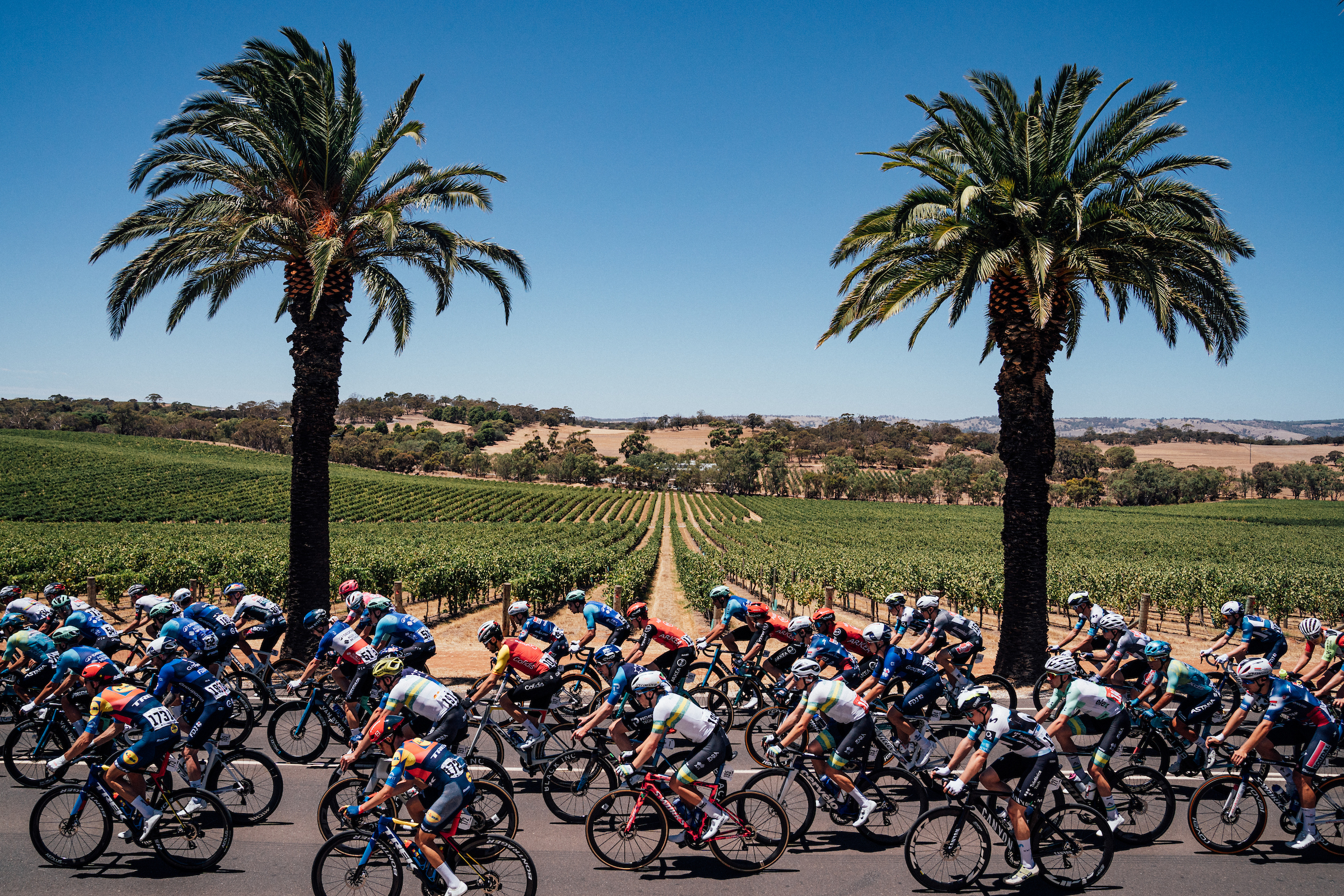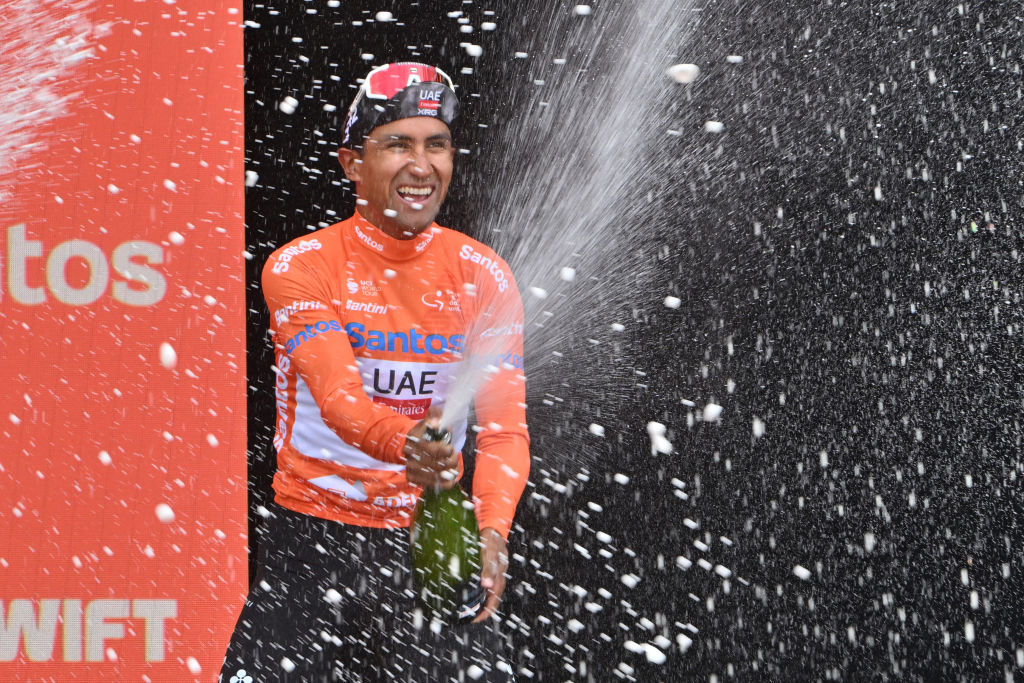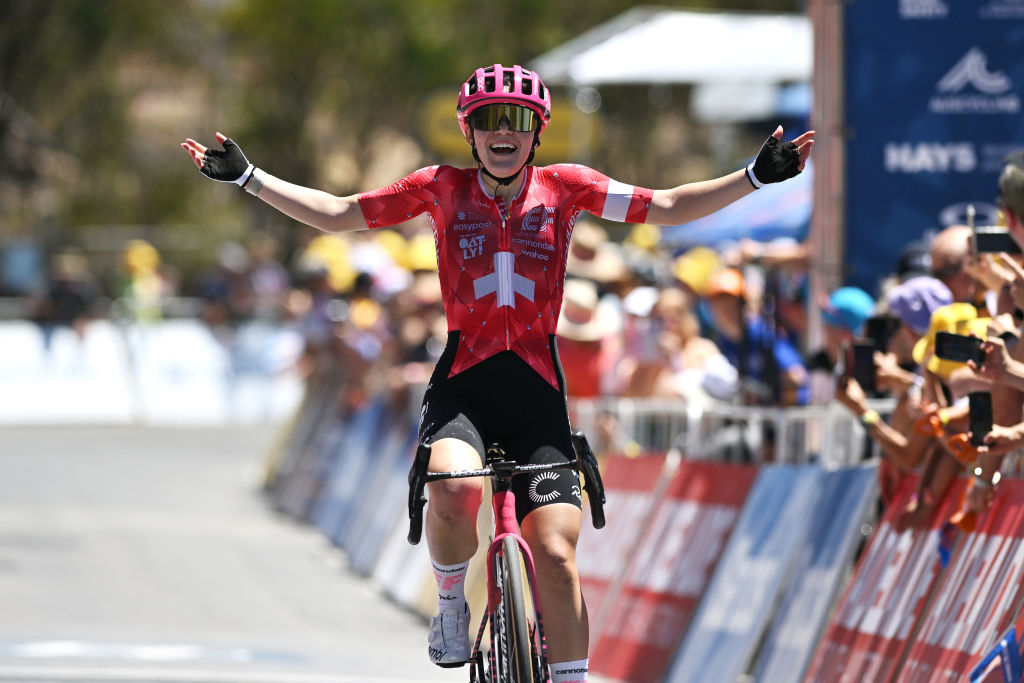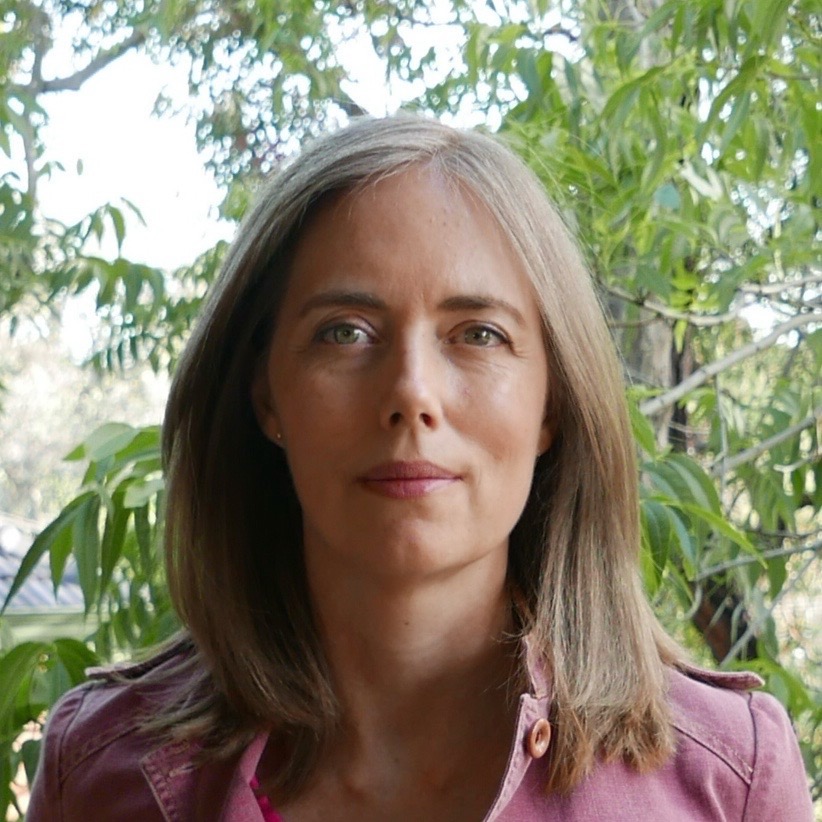From training race to charged WorldTour battles, the 25-year evolution of the Tour Down Under
Celebrating one era and carving out the next at Australia’s men's and women's WorldTour opener

Once for South Australia, it was the Formula 1 Grand Prix that was the crowning jewel of sporting events but its loss to Melbourne turned out to be Australian cycling’s gain – it delivered a clear opening for the state to soon get behind a very different type of race, the Tour Down Under.
What started as a men’s event in 1999 has changed considerably in the past 25 years, delivering the highly anticipated start to the season for both the men’s and women’s WorldTour with the 2025 race certainly delivering a level of competition that matches up to that top-tier status.
"In its first years, it was such a big step in Australian cycling but maybe it was seen as a race that was a wonderful holiday and a lot of fun but with the WorldTour status, it's just evolving each year," said Michael Rogers, who raced the event ten times, won it in 2002 and was back this year at the race with Lidl-Trek, having taken on a new role as management assistant lat last year.
"The teams come here to race now, to get points, whereas probably in its first years, it was considered more of a training race to get used to the European season. It's been quite an evolution."
An evolution that can be seen in a myriad of ways. On top of the men’s and women’s WorldTour events the race has this year added a new 1.Pro ranked women’s one-day race and presented a festival with an ever-growing array of supporting events – from a mass participation ride that gives amateurs the chance to ride the same course as the professionals, to gravel races and street parties.
It’s a formula that last year drew 770,600 visitors while creating 490 full-time equivalent jobs and generating $87.2 million in economic impact for South Australia but, of course, its core purpose will always be the top-level racing.
Internationalisation

It’s what draws so many like Peter Tyquin to the event again and again. More than 20 years ago and back in 2025, making the long trip all the way down from northern Queensland, around 2,000km away to get Stuart O’Grady to freshen up the signature on a Credit Agricole jersey signed in 2001 by the man who was then on his way to a second overall victory at the event where he is now race director.
Get The Leadout Newsletter
The latest race content, interviews, features, reviews and expert buying guides, direct to your inbox!
O’Grady stepped into the role ahead of the COVID-19 cancellations of the WorldTour events, though even then the race continued on in a different guise with organisers opting to deliver the Santos Festival of Cycling instead to give domestic riders who had their opportunities severely curtailed by the restrictions of the pandemic a world-class racing experience. Then when the event hit the WorldTour level once again, this time at both the men’s and women’s events, a new era hit its stride.
"We've had the Richie Porte era, we've had the Simon Gerrans domination but this year felt like a real international Santos Tour Down Under," O’Grady said by the banks of the Torrens River in Adelaide after the sixth and final stage of the men’s WorldTour event and the new 1.Pro women’s race had played out on Sunday. "The Aussies have been challenged across the women's and the men's which means the quality of the field, the level of racing and rider, is better.
An overall podium that was once heavy with domestic stars, in 2025 had none. Ecuadorian Champion Jhonatan Narváez (UAE Team Emirates-XRG) claimed the ochre jersey of the men’s event, with Spain's Javier Romo (Movistar) second and New Zealand’s Finn Fisher-Black (Red Bull-Bora-Hansgrohe) third. In the women’s Tour Down Under Swiss rider Noemi Rüegg (EF Education-Oatly) finished in ochre, with the Dutch Silke Smulders (Liv AlUla Jayco) second and Norwegian rider Mie Bjørndal Ottestad (Uno-X Mobility) in third.
"It just goes to show how I guess, the guys and girls are really coming here focused on trying to win stages, to get those incredibly important UCI points," added O’Grady.
The courses are also evolving, with riders broadly pointing to the fact that 2025 was a particularly challenging year in the race and O’Grady adding "that Willunga stage was probably one of the toughest we’ve ever had" but it's also a matter of keeping the balance in place given the early season time slot and potential for extreme temperatures.

Though the biggest changes are probably afoot in the women’s racing at the event, which kicked off in 2011 with a series of criteriums and morphed into a UCI 2.2 tour in 2016, before upgrading to 2.1 status in 2018, when it also led the way by offering the same prize money as the men, and then in 2023 it hit the top-tier with WorldTour status. In 2025, the race added another day of UCI racing to the three-stage tour, with a 1.Pro race on Sunday.
"We need more opportunities, we want to have more teams coming out, we want higher level teams and it's showing," said assistant race director Annette Edmondson as racing was about to kick off. "We've got 10 women's WorldTour teams out here this year, so that's the strongest field ever for our women's race.
"It just means that the progression of the racing is just going to keep lifting and we're going to be able to, hopefully, continue to progress and add perhaps another stage into our WorldTour event, but at the moment we're focusing on our sustainable progression as well. Changes don't happen overnight and we're very proud that Santos, our major sponsor is really prioritising the growth of the women's race."
What’s more the announcement came out during the racing that the Santos sponsorship that had been in place since 2010 was now locked in for another three years, ensuring - in an era where a number of aces have fallen by the wayside due to lack of funds – that the Australian women’s and men’s WorldTour race is on a firm footing as it celebrates its 25-year anniversary and sets a course toward the next big landmark.

Simone is a degree-qualified journalist that has accumulated decades of wide-ranging experience while working across a variety of leading media organisations. She joined Cyclingnews as a Production Editor at the start of the 2021 season and has now moved into the role of Australia Editor. Previously she worked as a freelance writer, Australian Editor at Ella CyclingTips and as a correspondent for Reuters and Bloomberg. Cycling was initially purely a leisure pursuit for Simone, who started out as a business journalist, but in 2015 her career focus also shifted to the sport.